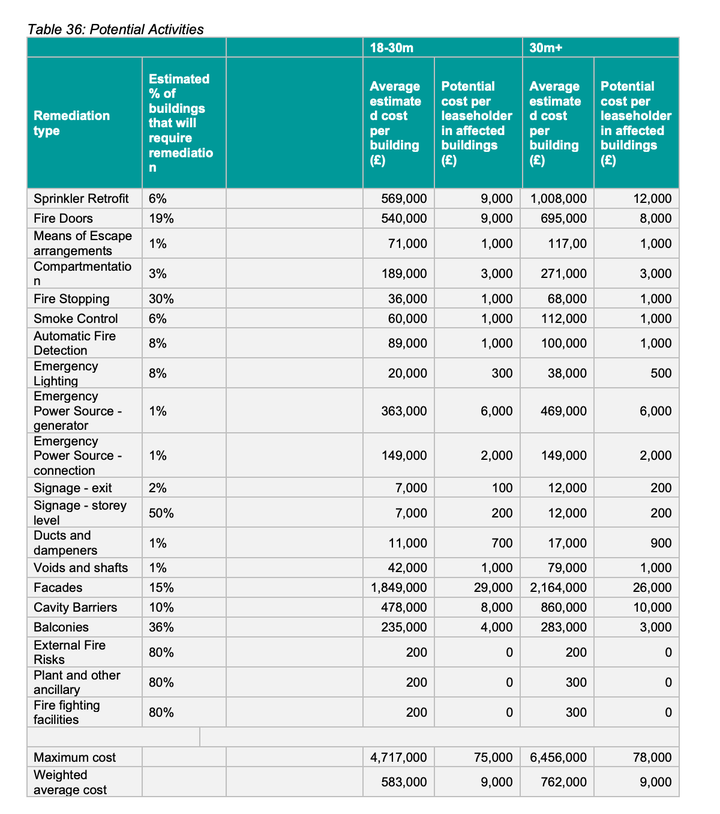People living in flammable tower blocks have warned of a “shocking betrayal” after the government unveiled new legislation that could leave them paying tens of thousands of pounds each to make their homes safe.
On Monday, ministers published a draft version of their Building Safety Bill, hailed by housing secretary Robert Jenrick as “the most significant and fundamental changes to building safety legislation in decades”.
The bill was driven by the many faults in safety regulations discovered in the aftermath of the Grenfell Tower disaster in 2017, with hundreds of blocks fitted with flammable cladding, fire doors that failed tests and inadequate structures to stop the spread of fire.
The legacy of the tragedy, which saw 72 people die, continues today – more than 240 high-rise buildings with the same cladding blamed for the rapid spread of the Grenfell blaze have yet to see it fully removed.
But campaigners are alarmed the bill includes a new charge for leaseholders, which they are concerned could be exploited by unscrupulous landlords.
Ministers are proposing a new “building safety charge” which would be separate from the typical service charge for the upkeep of a building. The idea is to provide “greater transparency around costs incurred in maintaining a safe building”, the Ministry for Housing, Communities and Local Government says.
While the government insists “it is our intention that leaseholders should not face unaffordable costs”, the government’s own impact assessment spells out how much the bills could be.
Leaseholders in the most expensive high-rise buildings – 18 metres tall or more – could shell out between £30,000 and £60,000. A similar building requiring “less façade work and fire stopping” might burden each leaseholder with costs of £15,000 to £35,000 to bring them up to scratch, the document states.
It goes on to say that, while the least expensive buildings will require work costing less than £1,000 per leaseholder, the average estimate is £17,000 each. A full breakdown of costs of “potential activities” – such as retrofitting sprinklers and replacing faulty fire doors – even suggests a “maximum cost” of £78,000 per leaseholder for buildings above 30 metres.

The revelation has added to the financial and emotional misery being suffered by an estimated 500,000 people living with unsafe cladding as building owners have refused to take action.
The government has committed £1.6bn to remove flammable cladding from all affected buildings, but only a fraction of the money has been allocated. The delay is significant as incomplete repair work is leading to a slew of additional costs which are not covered by the state.
As HuffPost UK reported in April, hundreds of buildings are having to pay for expensive 24/7 fire patrols or risk being evicted. These watches are costing some people as much as £840 a month – more than their monthly mortgage payment.
HuffPost UK also reported how insurance premiums are soaring for people living in buildings covered in cladding, with one Birmingham tower block facing a bill increase from £43,000 to £500,000. Meanwhile, the coronavirus pandemic has slowed down remediation work to a glacial pace.
Many leaseholders and campaign groups took to social media to express their anger at the new charge, which they argue they should be footed by the government because of failed regulation and developers who originally built the blocks.
The UK Cladding Action Group told HuffPost UK that the draft bill places costs for “historic repairs to buildings we do not own, for defects we did not create [...] entirely on the shoulders of leaseholders”, and is urging the Ministry of Housing to work with leaseholder groups to amend the bill.
They said: “After years of hearing the government say that leaseholders should not have to pay to fix fire safety defects not of our making, leaseholders have today woken to the disappointing news that the government’s draft Building Safety Bill imposes on innocent residents a ‘building safety charge’ that does exactly that.”
They urge that “the financial implications arising out of the failures of the building safety regulatory regime in this country are borne entirely by those responsible for the regulations, the government; and the failures of safe construction and development are borne entirely by those responsible, the developers”.
Their statement adds: “Any other outcome would be a shocking betrayal of the government’s repeated promises to suffering residents, 37 long months on from the Grenfell tragedy, and would cause unimaginable harm to the mental health, wellbeing and financial stability of hundreds of thousands of innocent people in this country.”
Writing in The Times, Jenrick said: “The draft bill introduces a new building safety charge, to give leaseholders greater transparency around the costs incurred in maintaining a safe building.
“These must be affordable and proportionate, which is why I have deliberately included numerous powers in the draft bill to limit the costs that can be re-charged to leaseholders.
“We are committed to making sure that leaseholders won’t pay unaffordable costs for historic repairs to their buildings and will continue to engage with stakeholders, including leaseholders, on this issue while the draft bill is being scrutinised.”

